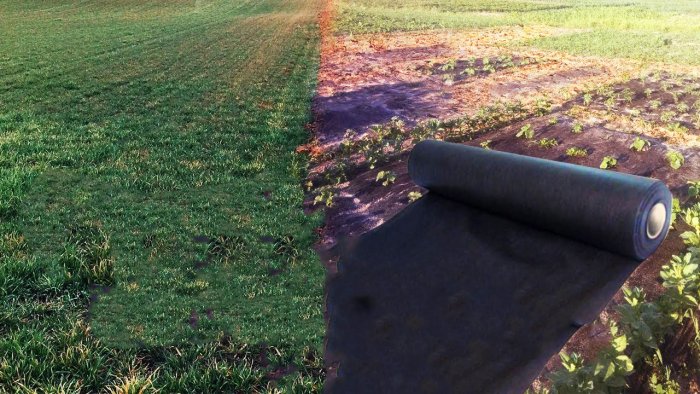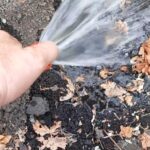Getting rid of weeds completely and growing a large harvest is the dream of any garden owner. But I don’t really want to use herbicides that are considered toxic. And the option with manual weeding is completely unsuitable for those who have a large volume of land. Therefore, the only option for many is the use of agrofibre.
Land preparation

To lay down the grass, you first need to mow all the grass. It is better to use a trimmer or lawn mower to get the smoothest possible surface. Small plants will not interfere, but hummocks and large thickets should be removed.
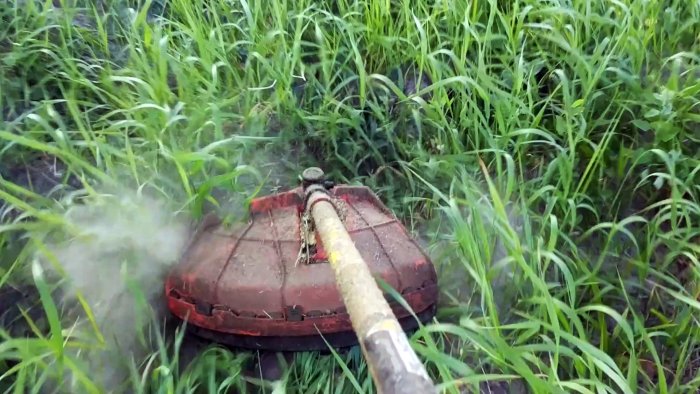
Marking
Next, mark the surface of the future bed. It should be 30 cm less than the width of the canvas used. The standard sizes of agrofibre are 1.6 m and 3.2 m. These are the most popular; manufacturers rarely offer other sizes. Mark the place with a fishing line and pegs or in another way along the perimeter to ensure accurate proportions. A furrow is dug along the line, at least half a shovel deep, or better yet, a full bayonet. After which the fishing line is removed.

Spreading the agro fibre
Agrofibre is sold in rolls. A width of 3.2 is usually folded in half. Therefore, it is very convenient to spread it – you just need to roll out the roll from the beginning to the end of the bed. A prerequisite is calm weather so that nothing interferes with work. After the covering material is laid out, it is necessary to cut off the required length, with a margin. Due to the terrain of the land, it is difficult to determine the required length when purchasing, so it is best to immediately buy a little more.
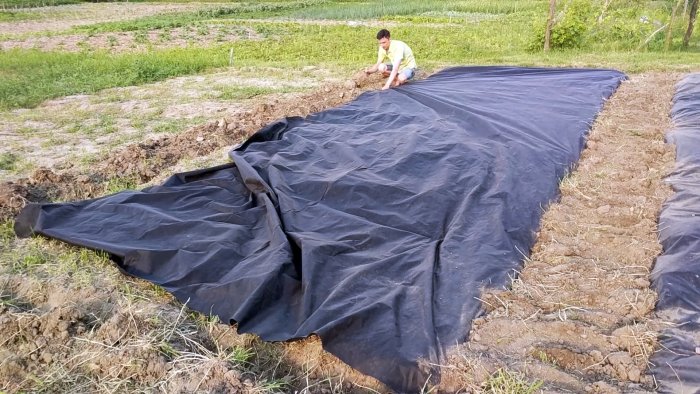
First, one side is secured, then the agro-fabric is stretched well and pulled from the sides, placing the edges in the dug furrow and adding earth on top. You can do this directly with your hands or help yourself with a shovel. Then the other side is secured. It’s unlikely that it will be possible to make a perfect bed; you just need to avoid strong waves. The material is elastic and after a couple of rains it will settle tightly to the ground.
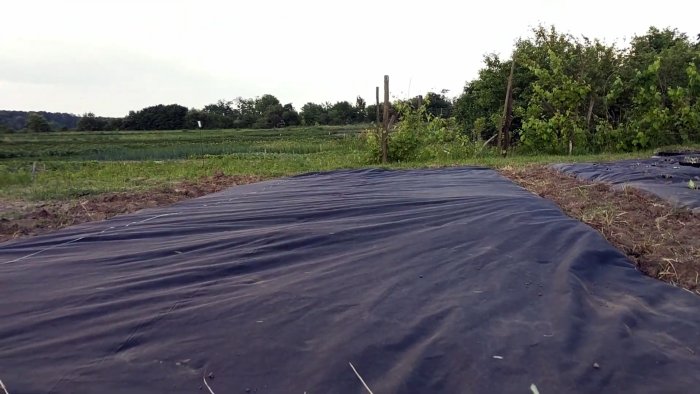
Preparing the agro fibre for seating
The places where the plants will be planted are marked on top. You can do this by eye, but it is better to use a ruler or a rack with marks so that the crops are planted equidistant from each other. Depending on what plant is planted, the distance will be different. For example, it is recommended to plant tomatoes in a checkerboard pattern, at a distance of 50 cm from each other.
Sprinkle the bed with crushed stone so that the canvas does not play in the wind. You can also use metal rods or other objects. The load is needed until the first rains, until the material settles down and fits snugly to the ground. After which the weights are removed.
It is better to make holes with special tools for burning holes in fusible materials. If you don’t have such a device, you can use a regular tin can without a bottom and a gas burner. But you should be careful so that the canvas does not catch fire in the wrong place.

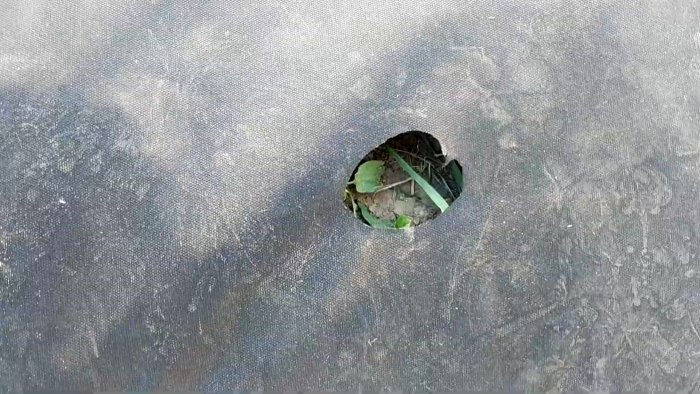
There is also a special, already perforated canvas on sale. But it usually has one type of hole and it is not a fact that they will suit your culture. You can cut holes using a regular blade, but it will take longer, and the joint itself may tear.
Planting
The place for the plant is slightly deepened with any wide board or tool, and the hole is filled with water. They plant a bush, and press it on the sides to cover it with soil.
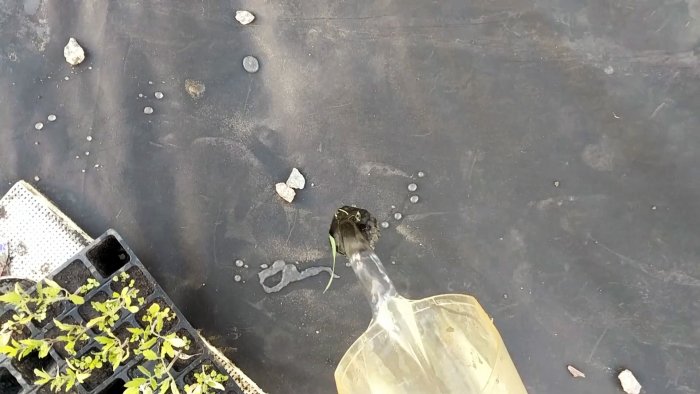
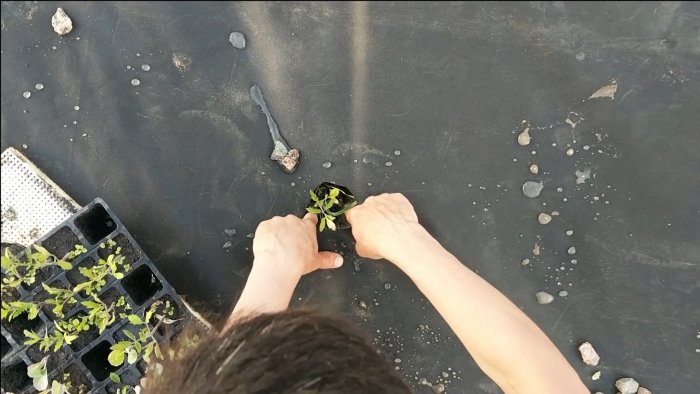
Care of the soil after use
After the harvest is harvested, you need to decide whether you will leave the canvas for the winter or put it away for storage. If you put it away, carefully roll it up and store it horizontally.
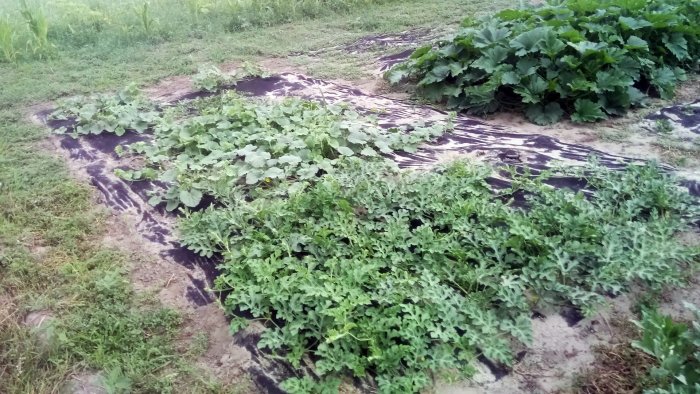
At the same time, do not forget to take care of the soil. If you find old roots, most of them will be dry and the weeds will certainly not sprout next year. But it’s better to throw away small bushes.
If agrofibre is left for the winter, place scraps of fabric into the cut holes and secure them with a rod.
Pros and cons of using agro fiber
The undoubted advantages of using agro fiber are:
- getting rid of hassle with weeds;
- a strong reduction in watering (about 4 times);
- rapid growth of crops whose roots require heat (the temperature under the canvas is much higher).
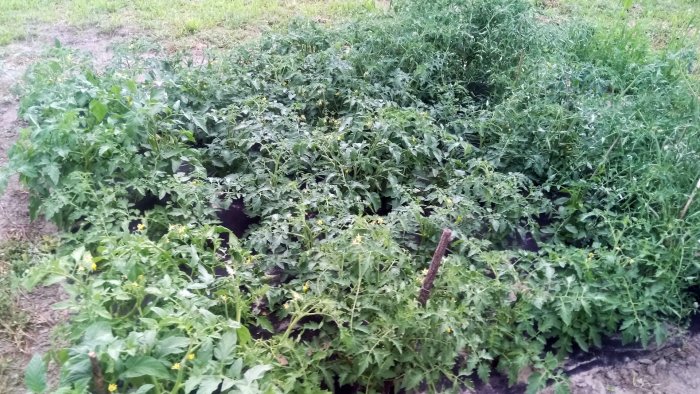
Also, if you leave the agro fiber for the winter, you will be surprised to find that the soil underneath is looser and softer, while around it it is impossible even to stick a shovel.

The disadvantages include the short service life of the agro fiber. It lasts from 2 to 3 years, and if you don’t remove it for the winter, then even less. Difficulties will also arise if there are mice under the covering material or moles in the ground. It will be more difficult to get rid of them.

